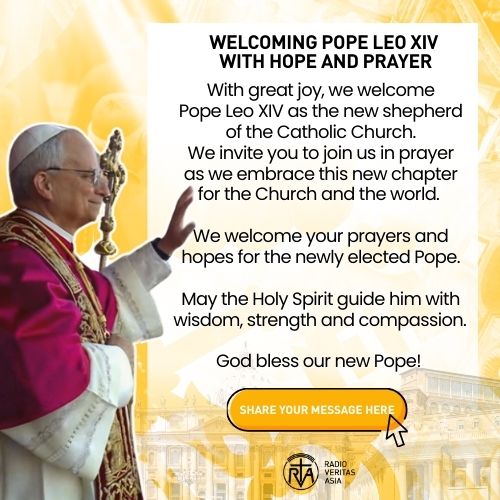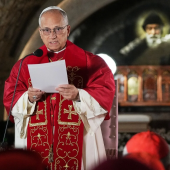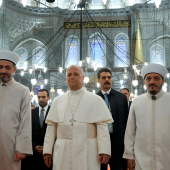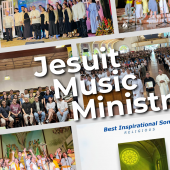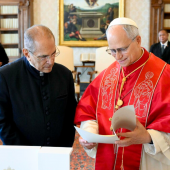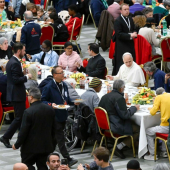Pope Leo XIV and King Charles III mark historic step toward Christian unity
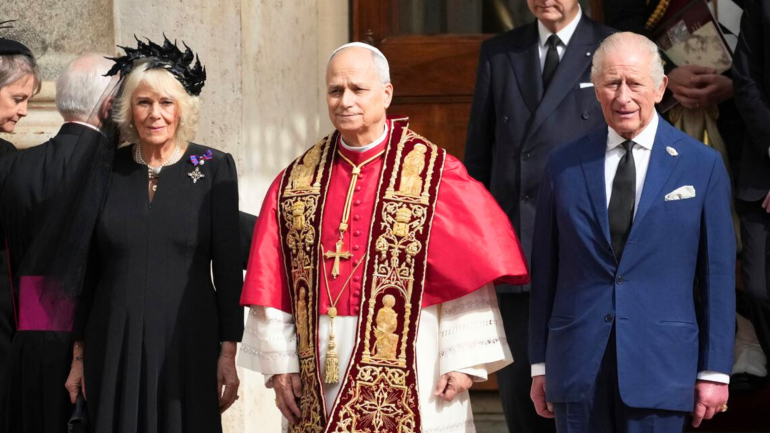
In a moment filled with history and hope, Pope Leo XIV received King Charles III and Queen Camilla of the United Kingdom at the Vatican Apostolic Palace on October 23, marking one of the most significant encounters between the Catholic and Anglican Churches in five centuries.
The day’s events, culminating in an ecumenical prayer service in the Sistine Chapel and a ceremony at St. Paul Outside the Walls Basilica, symbolized a renewed commitment to unity, dialogue, and shared care for creation.
During cordial talks with Cardinal Pietro Parolin, Vatican Secretary of State, and Archbishop Paul Richard Gallagher, Secretary for Relations with States and International Organizations, both sides expressed appreciation for the positive diplomatic relations between the Holy See and the United Kingdom.
They discussed environmental protection, the fight against poverty, and the pursuit of peace, while affirming a common desire to strengthen ecumenical dialogue.
Historic Prayers Beneath Michelangelo’s Frescoes
For the first time since the Reformation, an English monarch joined a Pope in prayer, an event that had not taken place for nearly 500 years. The midday prayer in the Sistine Chapel, led by Pope Leo XIV and the Archbishop of York, Most Rev. Stephen Cottrell, gathered both Catholic and Anglican leaders, including Cardinal Vincent Nichols and Archbishop Leo Cushley of Edinburgh.
Hymns were sung by the Sistine Chapel Choir, the Lay Clerks of St. George’s Chapel (Windsor), and the Children of the Chapel Royal (St. James’ Palace), a symbolic harmony of voices representing two Christian traditions once divided by history.
The liturgy featured hymns translated by St. John Henry Newman, the English theologian and bridge between the two Churches, who will be proclaimed a Doctor of the Church on November 1. For both Pope Leo and King Charles, Newman stands as a “witness of faith and unity” across confessional boundaries.
A Shared Commitment to the ‘Ecumenism of Our Common Home’
Speaking to Vatican News, Fr. Martin Browne, OSB, of the Dicastery for Promoting Christian Unity, described the encounter as “a visible sign of the closeness between our Churches.” He emphasized that the event reflected not only theological dialogue but also a spiritual and ecological partnership.
“The Catholic Church and the Anglican Communion share a deep concern for our planet,” Fr. Browne noted. “This meeting, ten years after Laudato si’, embodies what Pope Francis once called an ‘ecumenism of our common home.’”
This environmental focus resonates strongly in Asia, where climate change, poverty, and displacement affect millions. Christian communities across the region, often living side by side with other religions, can draw inspiration from this ecumenical gesture, seeing in it a call to collaborate across faiths for the care of creation and the dignity of all people.
A Renewed Spirit of Communion
Later in the day, Pope Leo XIV and King Charles III participated in another ecumenical service at St. Paul Outside the Walls, where the King was named a Royal Confrater of the Basilica, a title symbolizing fraternity between the English Crown and the Holy See. The chair created for the occasion bears his coat of arms and the Gospel verse Ut unum sint (“That they may be one”), encapsulating the event’s ecumenical spirit.
Archbishop Flavio Pace, Secretary of the Dicastery for Promoting Christian Unity, and Bishop Anthony Ball, Director of the Anglican Centre in Rome, described the visit as “a sign of confidence in the path of dialogue and engagement.” They recalled Pope Leo’s own prayer for “the re-establishment of full and visible communion” between the two Churches.
Lessons for the Asian Church
In Asia, where Christians often live as minorities amidst vibrant religious pluralism, this gesture of unity between Catholics and Anglicans holds profound pastoral and cultural significance. It demonstrates that authentic dialogue begins in prayer, humility, and shared responsibility for humanity’s future.
As the region continues to foster ecumenical and interreligious understanding, from India’s Christian-Hindu initiatives to Southeast Asia’s Christian-Muslim cooperation, the Vatican event offers a model: unity rooted in respect, dialogue, and a common mission to serve life and creation.
May this moment of unity between Rome and Canterbury inspire the Churches of Asia, to walk together in faith and friendship, building bridges of hope for the world.
Radio Veritas Asia (RVA), a media platform of the Catholic Church, aims to share Christ. RVA started in 1969 as a continental Catholic radio station to serve Asian countries in their respective local language, thus earning the tag “the Voice of Asian Christianity.” Responding to the emerging context, RVA embraced media platforms to connect with the global Asian audience via its 21 language websites and various social media platforms.


